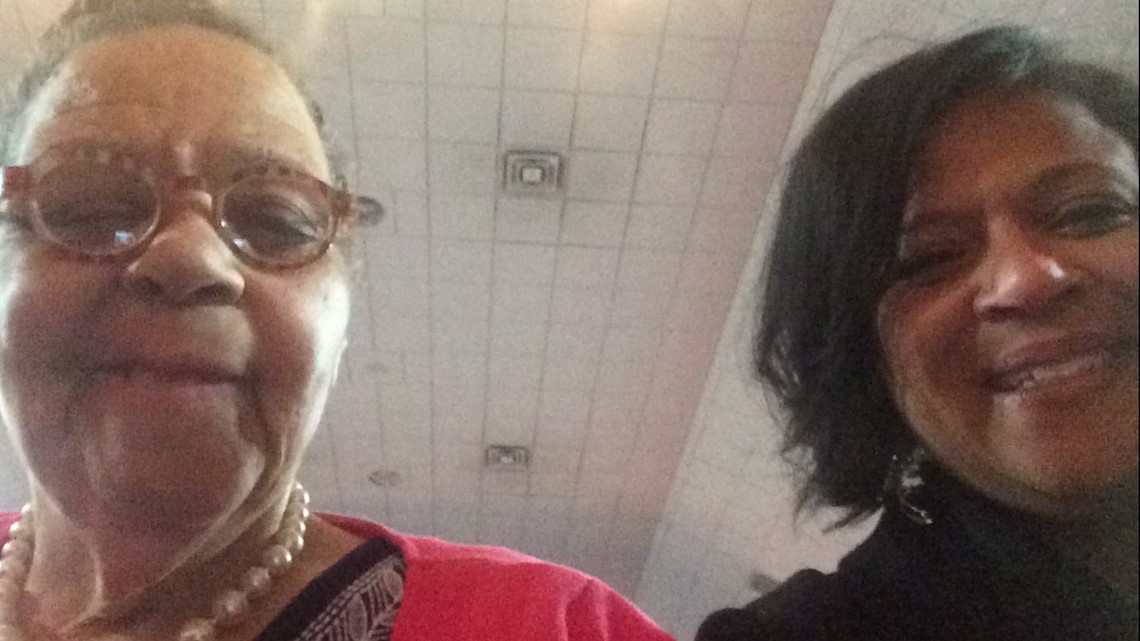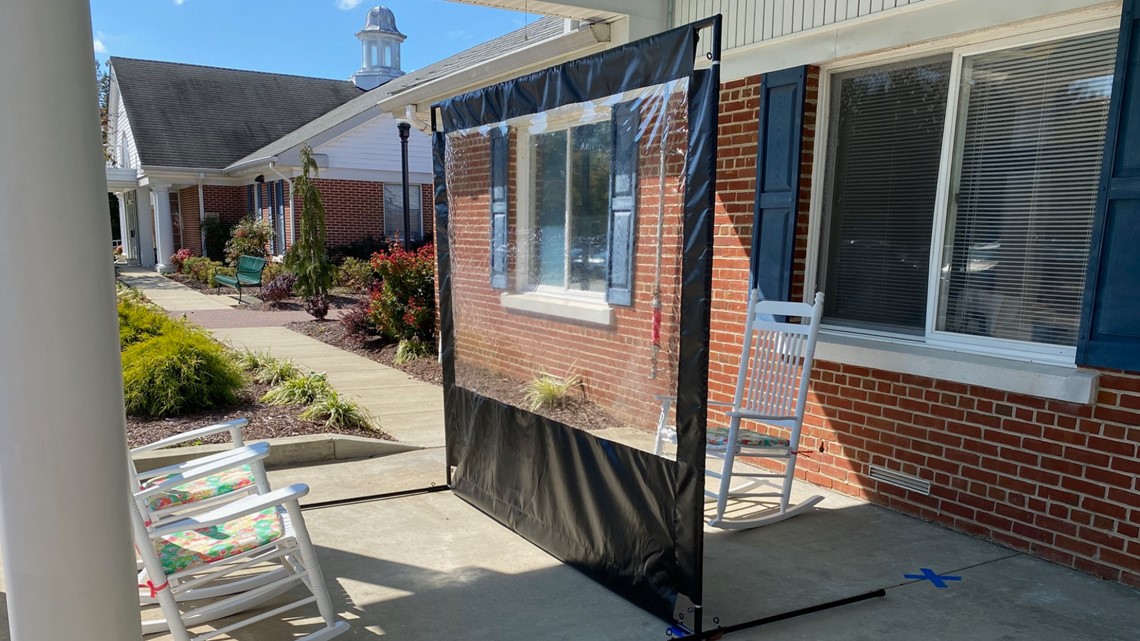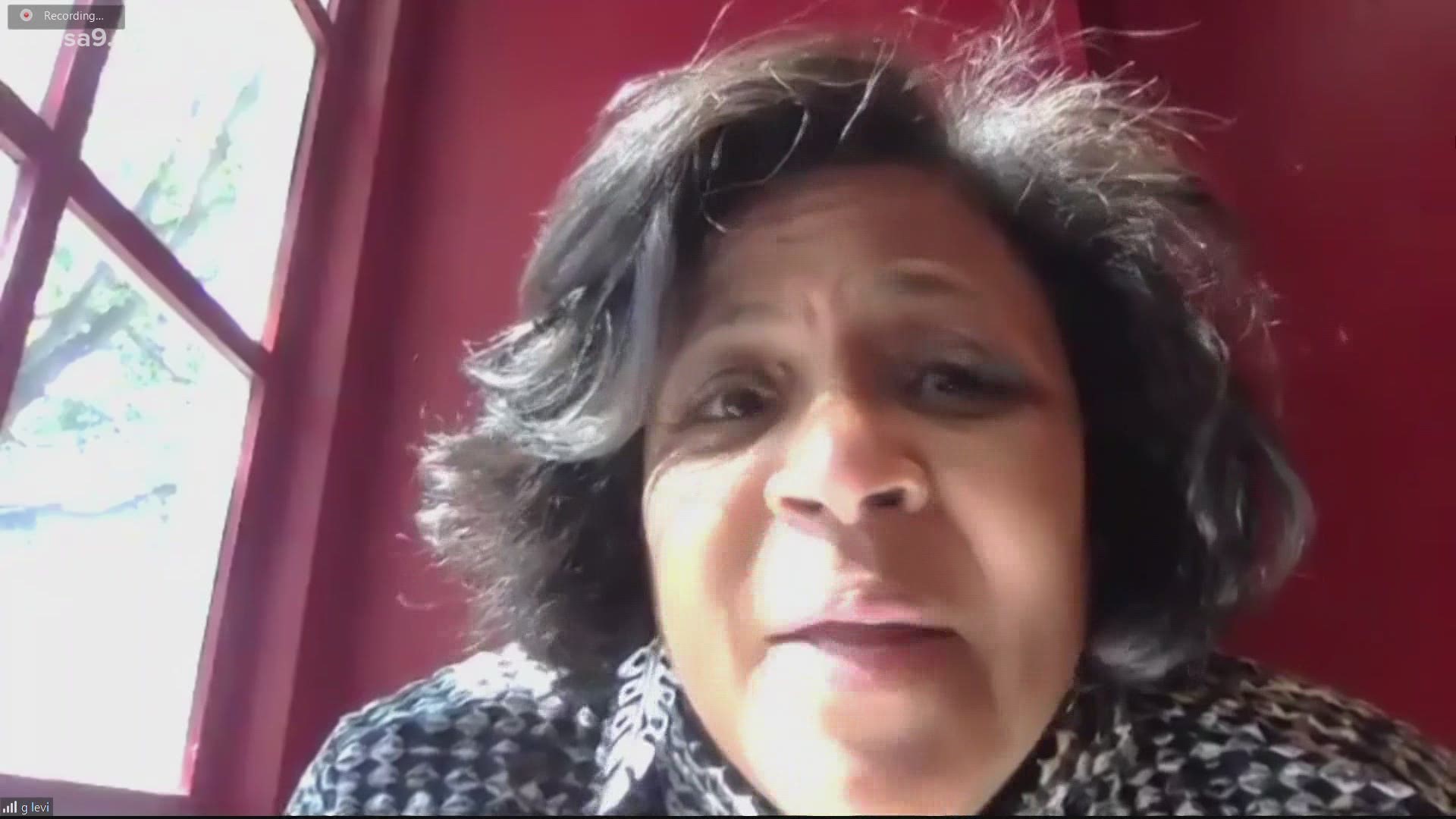PRINCE GEORGE'S COUNTY, Md. — At the height of the pandemic, Maryland nursing homes became epicenters of coronavirus outbreaks. Now, they're preparing to let visitors back inside with extra safety precautions.
Families who haven't seen their loved ones face-to-face in seven months are thrilled. Gerron Levi's 76-year-old mom lives at the Larkin Chase Center in Bowie. The Maryland Department of Health's nursing home dashboard reports that the center has seen 80 resident cases and 19 deaths.
Levi's mom contracted the coronavirus in May, but she recovered.
“We survived the COVID, but the isolation is proving to do far more damage," Levi said.
Since March, she's only seen her mom through zoom and the window.
“I’ve seen, definitely in the last month, an escalation in her dementia," Levi said. "I associate it with the lack of things to do and the movement and social activity.”
RELATED: Bowie nursing home resident dies of coronavirus a week after sharing her worries from inside


Gov. Larry Hogan announced Thursday that nursing homes can begin to allow limited indoor visitation if they have no active COVID cases in the last 14 days and no outbreak testing in progress.
The Dept. of Health said a facility is also required to follow the relevant Centers for Disease Control and Prevention (CDC) and Centers for Medicare and Medicaid Services (CMS) guidance on screening guidance for visitors:
- Screening of all who enter the facility for signs and symptoms of COVID-19 (e.g., temperature checks, questions or observations about signs or symptoms), and denial of entry of those with signs or symptoms
- Hand hygiene (use of alcohol-based hand rub is preferred)
- Face covering or mask (covering mouth and nose)
- Social distancing at least six feet between persons
- Instructional signage throughout the facility and proper visitor education on COVID19 signs and symptoms, infection control precautions, other applicable facility practices (e.g., use of face covering or mask, specified entries, exits and routes to designated areas, hand hygiene)
- Cleaning and disinfecting high frequency touched surfaces in the facility often, and designated visitation areas after each visit
- Appropriate staff use of Personal Protective Equipment (PPE)
- Effective cohorting of residents (e.g., separate areas dedicated COVID-19 care)
- Resident and staff testing conducted as required at 42 CFR 483.80(h) (see QSO-20- 38-NH)
A spokesperson for Larkin Chase said it had its last positive staff case on Sept. 11, 2020. She said according to the County, the center must wait 28 days to begin indoor visitation.
In the meantime, they have started preparing for indoor visitation by “acquiring safety barriers for indoor visitation, identifying areas where the visits can occur, determining how many visitors can be in a Center at any given time, developing schedules, and acquiring additional protective equipment and cleaning supplies to meet CMS requirements."
Sagepoint Senior Living Services also saw an outbreak near the start of the pandemic. As of May, the Maryland Dept. of Health said Sagepoint had 97 resident cases and 34 resident deaths.
By that time, COVID-19 deaths in long-term care facilities had accounted for half of the state's total deaths.


Sagepoint President and CEO Andrea Dwyer said the guidance begs as many questions as it answers.
“In here, it does not say that you have to test visitors. It says you can test them, or you can ask them to bring in a test that they received within the last two to three days with their results. That’s a problem, how are people with their 89 year old husband here going to be able to do that and afford that? The flip side is if we test them, that opens up…are we responsible for contact tracing? These are nasal swabs. What if someone says we damaged them? What is the liability?" she said.
WUSA 9 brought some of her other questions to the Department of Health, and they responded with the following answers:
Question 1: The governor announced that the state is providing rapid antigen tests, which are described to be best used “with high viral shedding; probably within the first 5 days after symptom onset." What is the intended use of these?
Answer: The federal government provided the initial round of rapid point of care testing devices to most nursing homes across the nation. Maryland ensured a level playing field by providing point of care devices to the remaining nursing homes that did not receive federal machines.
The recent Maryland Department of Health (MDH) guidance on the use of POC testing devices for COVID-19 allows congregate-living facilities (nursing homes, assisted living facilities, state and local facilities, and group homes with 10 or more occupants) to deploy rapid antigen screen tools at the discretion of the facility’s medical director and other healthcare personnel (see page six and onwards of the guidance document). Facilities can and are encouraged to continue to use PCR COVID tests if they choose to do so.
Rapid antigen tests are valuable screening tools that are used to detect the potential presence of COVID-19 and will help ensure that the state is protecting the most vulnerable populations. Maryland is one of the first states in the country to deploy and accelerate rapid antigen testing in congregate-living facilities (nursing homes, assisted living facilities, state and local facilities, and group homes with 10 or more occupants). We recommend that usage of rapid point of care tests as indicated by the manufacturer and their FDA emergency use authorization.
Question 2: Are facilities required to submit a plan for indoor visitation before opening it up (as they did for outdoor visitations)? Do they have to offer indoor visitation?
Answer: Nursing homes facilities are not required to offer indoor visitation, nor submit a plan to offer indoor resident visitations. Facilities are required to ensure that they are in full compliance with CDC, CMS and MDH guidance related to COVID-19 spread prevention and infection controls.
Question 3: Are they allowed to use another vacant facility onsite as the meeting place?
Answer: A facility may elect to use other facilities on their campuses as long as they meet all safety and infection control measures as established by the CDC, CMS and MDH and can be operated in a safe manner
Dwyer said they submitted questions to the Department of Health. As they wait for answers, they're preparing the building for indoor visits.
“We’ve actually hired a consultant to look at this airborne issue, …the HEPA or UV those kinds of systems," Dwyer said. "We would maintain the same physical setup inside as we did outside, so we would have everybody masked…everybody sanitized, and then the plexiglass in between with people minimum three to four feet from plexiglass.”
She and the President and CEO of the Health Facilities Association of Maryland are concerned about the PPE supply chain.
President of the Health Facilities Association of Maryland talks prepping for fall
“We’re actively working within the industry, with our state partners, and our federal partners on issues related to PPE, testing, and really navigating a next chapter of this virus that we’re very concerned about, and that is that chapter that happens while we also have the naturally co-occurring fall flu season," CEO Joe DeMattos said.
Levi said she's grateful to staff for taking such good care of her mom -- essentially subbing in when she couldn't be there in person.
When it comes to visiting in person, she said there is no ask to big.
“I’m willing to do whatever they require," Levi said. "I’ll suit up with a face guard, gloves, whatever I required. I’ll provide my own."
Both Larkin Chase and Sagepoint said they're still offering virtual visits regardless of indoor and outdoor accommodations.
“You’re trying to balance residents’ rights and dignity with all of these other clinical aspects and regulatory environment," Dwyer said. "As long as most family members are satisfied to visit outside, that is preferred.”

